Unique Chevy Suburban Command Vehicle Delivered To Military
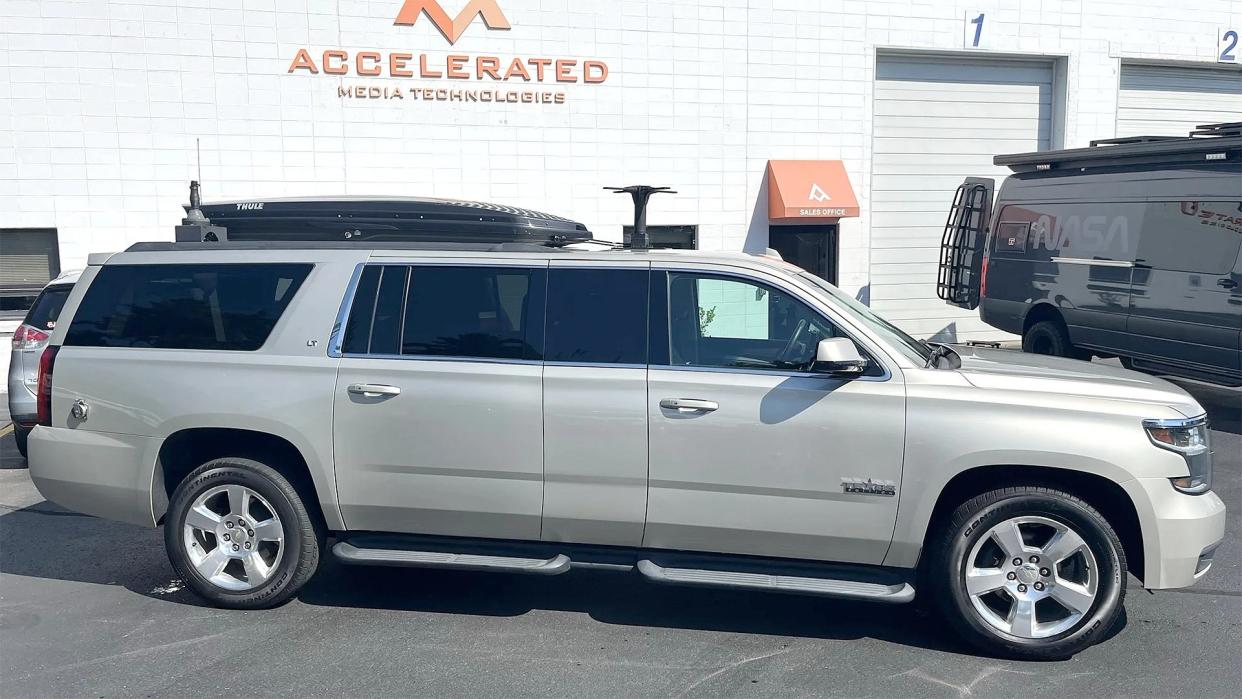
A highly customized stretched Chevy Suburban mobile command vehicle was recently delivered to U.S. Northern Command (NORTHCOM). The modified sport utility vehicle features a robust and secure communications suite. It looks set to join a U.S. military task force that is primarily on call to help respond to domestic nuclear, chemical, and biological attacks and other incidents.
Accelerated Media Technologies (AMT) issued a statement earlier this month about the delivery and provided additional details about the "mobile command center" vehicle for U.S. Northern Command. The Auburn, Massachusetts-based company offers a variety of customized SUVs and trucks intended for military forces and law enforcement agencies, as well as mobile television broadcast vehicles.
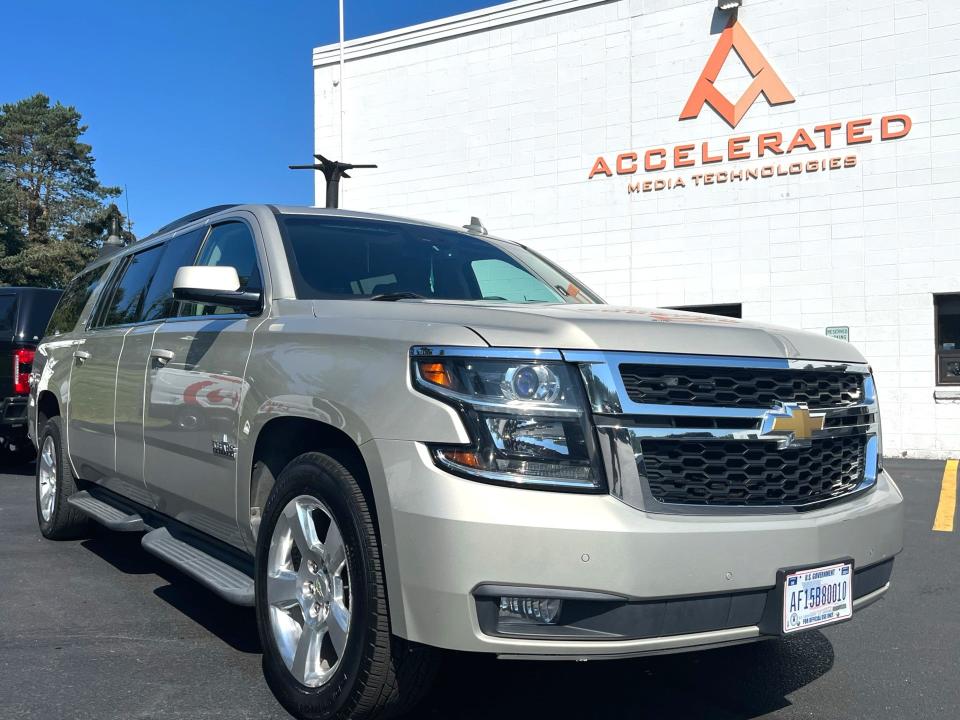
"The physical shell of the vehicle was built by AMT’s master craftsman and stretched 20” to make the custom workspace" and it has been "relined using an entirely new interior, carpets, leather interior, [and] custom work-space," the company's statement added. AMT does not mention any armoring or other additional protective features being added to this particular SUV.
The command vehicle looks to have started life as a mid-2010s Chevy Suburban Texas Edition based on its external features and the unique badge on the driver and front passenger doors.
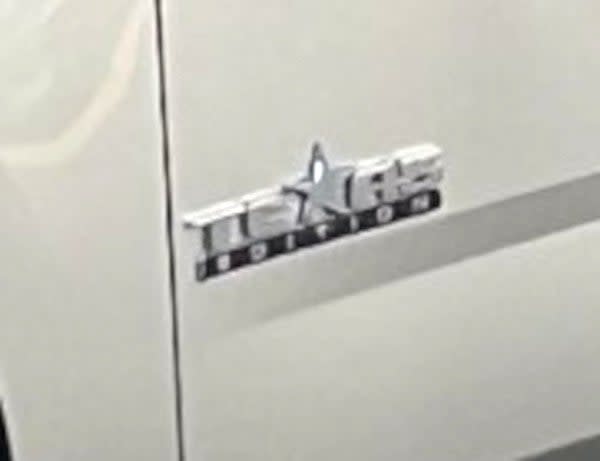
Photographs of the four-door vehicle show an X-shaped antenna, a design that is typically associated with UHF satellite communications systems. What appears to be the base for a whip-type communications antenna is also seen at the rear of the roof on the right side. It also has a Thule roof storage box.
Pictures of the vehicle's interior show a very spacious main cabin with two pairs of seats facing each other. Two flat panel screens flip down from the roof of the interior and face forward and back. There are four cameras attached to the cabin roof, each one aimed at one of the seats, which support video conferencing.
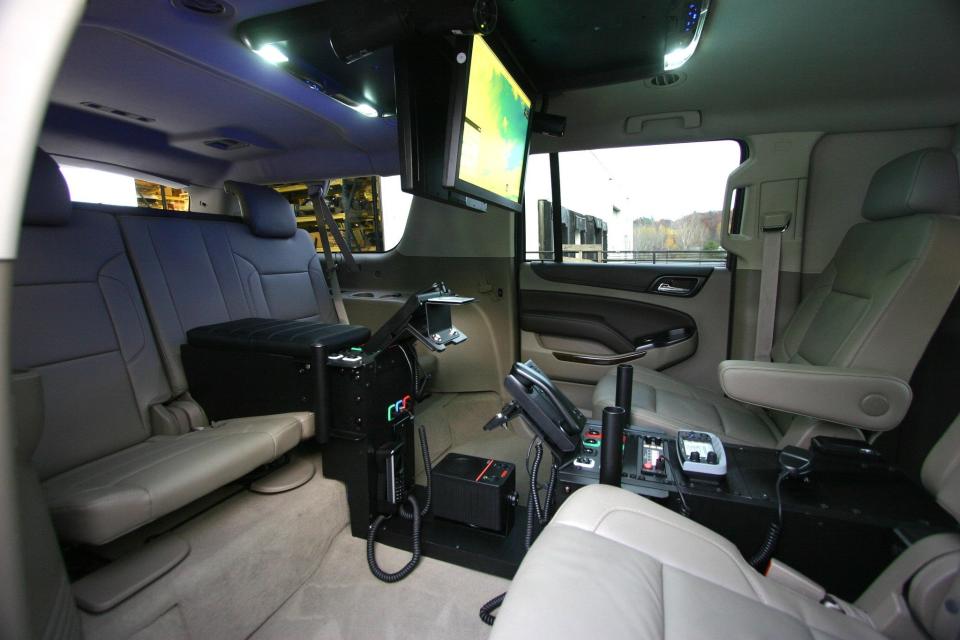
Multiple radios, phones, and other communication system components are clearly visible. The rear end of the vehicle looks to be taken up by a large box that could hold more communications gear, computers, and other equipment.
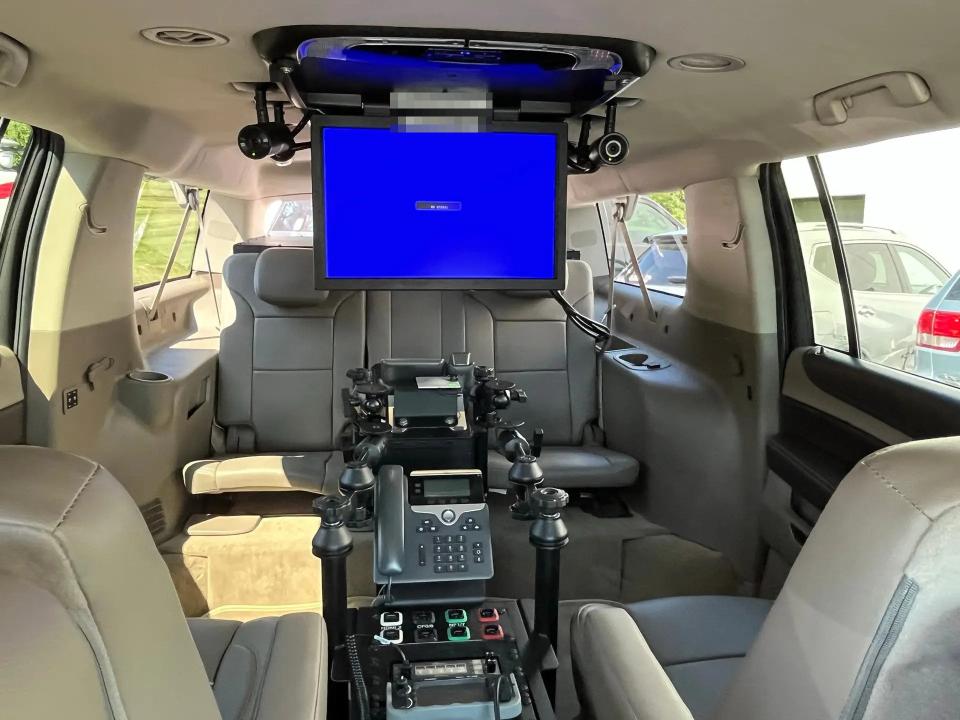
Inside, "the Vision Series command center is configured ... with both Secure Internet Protocol Router/Non-Secure Internet Protocol Router (SIPR/NIPR) communications and other critical telecom and video communications infrastructure for some of the nation’s most critical missions, according to AMT. "It is powered by our industry crushing MVP-E Power system."
SIPR and NIPR, which are used to transmit classified and unclassified information, respectively, are essentially internal U.S. military internets. They are the two main networks American forces employ to support day-to-day operations around the world.
MVP-E is a modular auxiliary power system that AMT offers, which consists of up to four 12V Mil-Spec LiFePO4 Lithium batteries and various associated systems. This provides power to onboard systems without the need to keep the vehicle's engine running.
AMT says that MVP-E can run for up to 8 to 10 hours before needing to be recharged, which can be done in part via solar panels, depending on the configuration of the system and the vehicle it is installed on. In addition, "users report 60% fuel savings and over 50% preventive maintenance savings due to vehicles not idling excessively," according to the company's website. Not having to run the engine reduces the vehicle's noise signature, which can be useful in various contexts, as well.
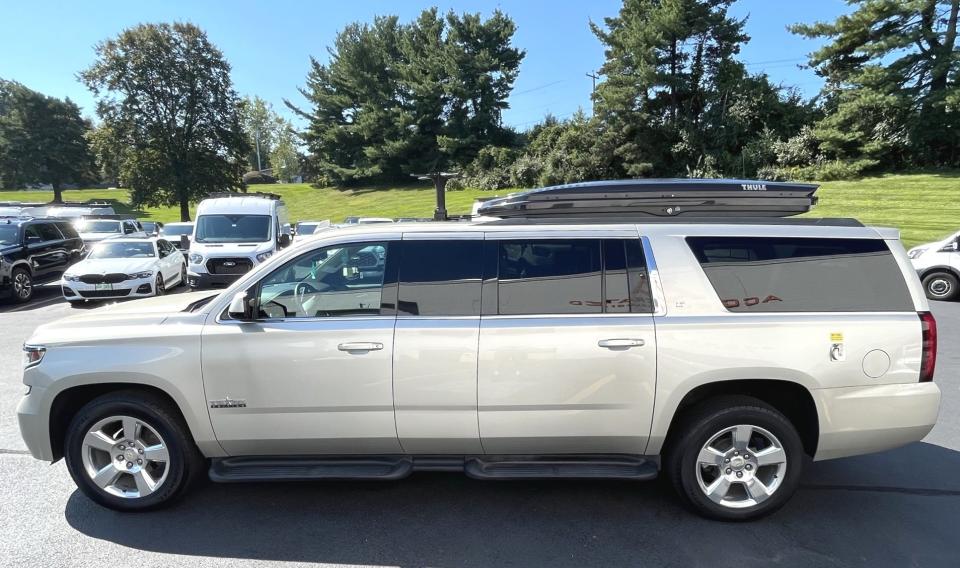
It is unclear whether or not this vehicle was already in U.S. military service, but it had been sent back to AMT for a major overhaul. The company's statement about the recent delivery says that the underlying stretched Suburban was first created in 2015 and says that it was "returned to AMT" to "take the truck into the next stage of its life."
It's also not clear who specifically will be using this vehicle. AMT's statement mentions both NORTHCOM and the U.S. Canadian North American Aerospace Defense Command (NORAD), as well as an unnamed joint task force, or JTF. One of the interior pictures does show a label that says "JTFCS-C2V" above on of the monitors, which could point to this being a command and control vehicle for NORTHCOM's Joint Task Force-Civil Support (JTF-CS).
The War Zone has reached out to both NORTHCOM and AMT for more information about this vehicle, and who will be employing it and how.
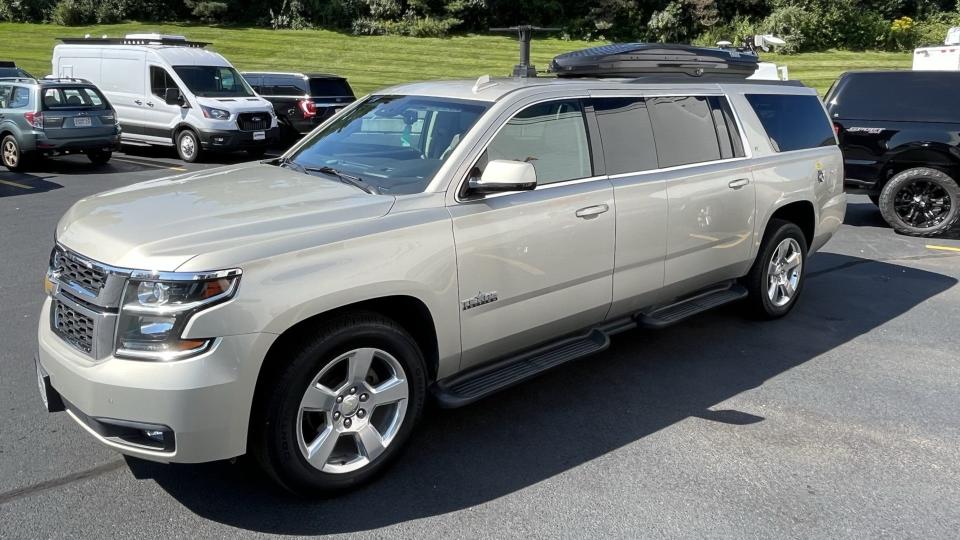
AMT's mobile command vehicle would be a perfect fit for JTF-CS, which was first established in 1999.
"JTF-CS anticipates, plans, and prepares for chemical, biological, radiological, and nuclear (CBRN) response operations," is how one unclassified 2012 briefing describes the task force's primary missions. "When directed, JTF-CS deploys to command and control DOD forces and conducts CBRN response operations in support of civil authorities in order to save lives, prevent further injury, and provide temporary critical support to enable community recovery."
The latter point about working under civilian authorities is important because the U.S. military, by law, is prohibited from or otherwise restricted when it comes to conducting law enforcement and certain other kinds of missions domestically in anything but a supporting capacity. At the same time, the armed forces possess a slew of capabilities that law enforcement and other civil agencies don't have and can offer immense additional capacity when it comes to things like logistics and communications in response to a crisis. Having task forces like JTF-CS in place helps reduce the lag time between when an incident first occurs and when military support can swing into action.
JTF-CS by itself is mostly a headquarters entity designed to help coordinate operational-level, medical, aviation, logistics, and other support. Though mainly focused on responding to CBRN attacks and incidents, what it provides can be useful in the aftermath of other crises, like natural disasters. Various additional active-duty U.S. military units, as well as those from various reserve components, including the National Guard, can be attached to the task force in a tailored way depending on the exact situation.
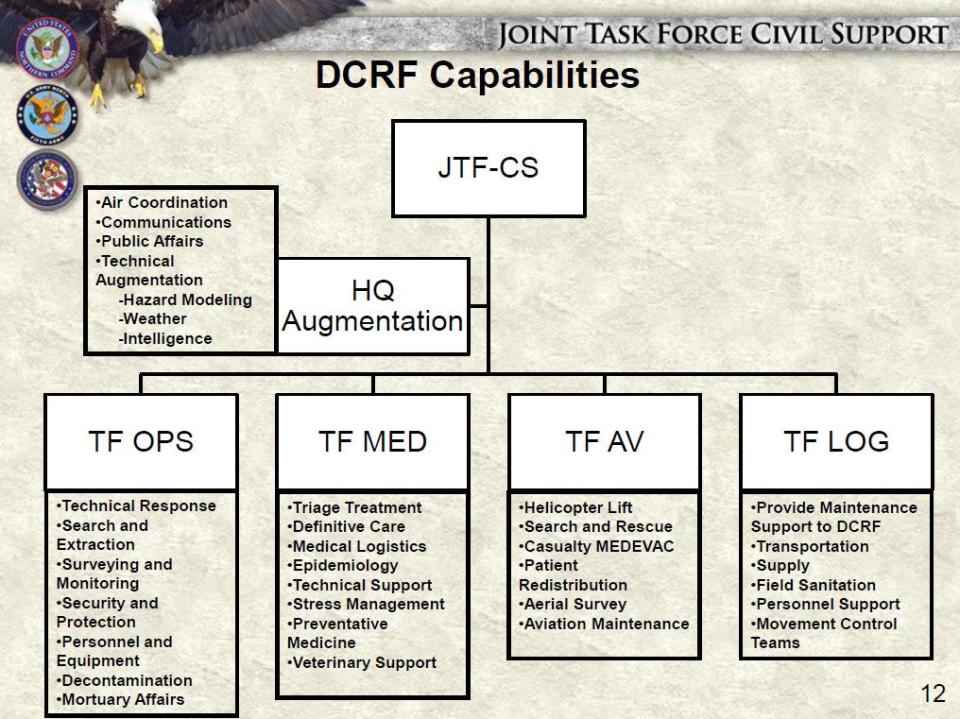
Being able to supplement civilian command and control capabilities, as well as provide access to information via U.S. military networks, is one of JTF-CS's key functions. In addition to command vehicles like the one AMT delivered earlier this month, the task force has access to other modified SUVs called Deployable Communications Capabilities Systems (DCCS) with large satellite communications dishes on top that act as mobile network hubs offering links to SIPR, NIPR, and more. Contracting records show that AMT has been involved in the conversion of DCCS vehicles, too.
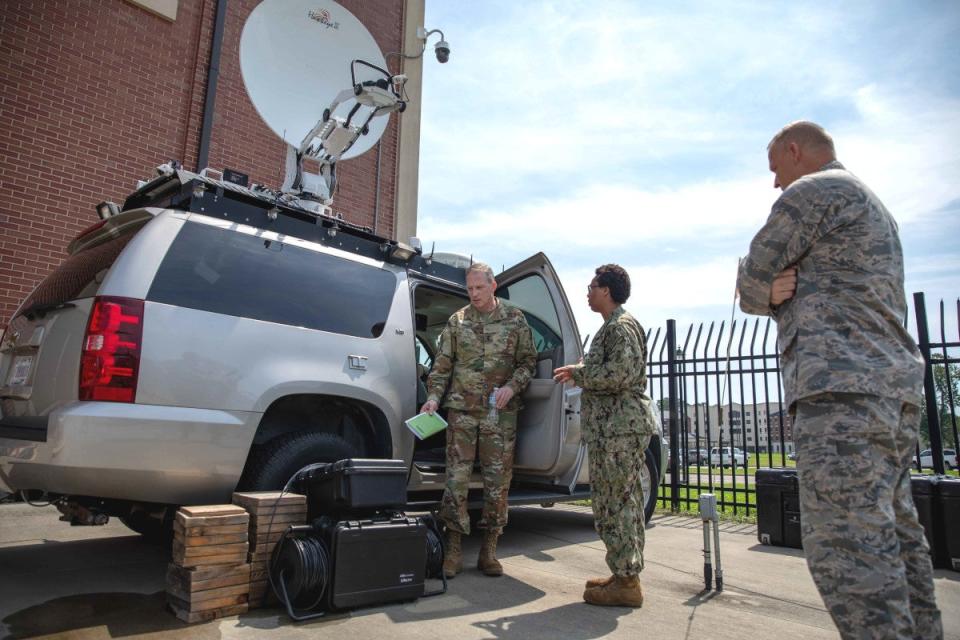

There are, of course, other joint task forces under the umbrella of NORTHCOM to which the stretched Chevy Suburban command center might belong to, including others that could be tasked with supporting domestic missions. Some of these units also have access to fleets of modified civilian vehicles for use as mobile command and control and communications nodes.
For instance, in 2019, it emerged that the Crisis Response Team within Special Operations Command North (SOCNORTH), the special operations component of NORTHCOM, had acquired a number of heavily customized Chevy Suburbans previously operated by the White House Communications Agency. The WHCA originally had these vehicles, also known as Roadrunners, modified to provide vital command and control and communications support for presidential motorcades. SOCNORTH's planned to continue using them in similar roles, but with an altered configuration.
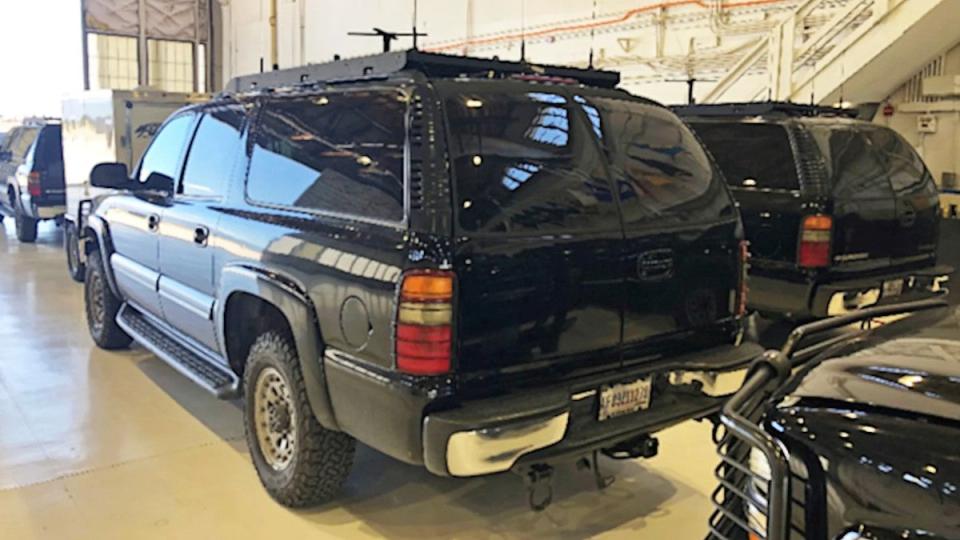
However, based on the information available, JTF-CS still seems like the most likely contender for who will be using the command vehicle that AMT recently delivered.
The heavily customized stretched Chevy Suburban with its extensive secure communications suite is sure to be a valuable addition to whatever unit within NORTHCOM that ends up operating it.
Contact the author: joe@thedrive.com

